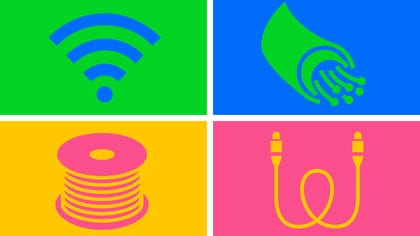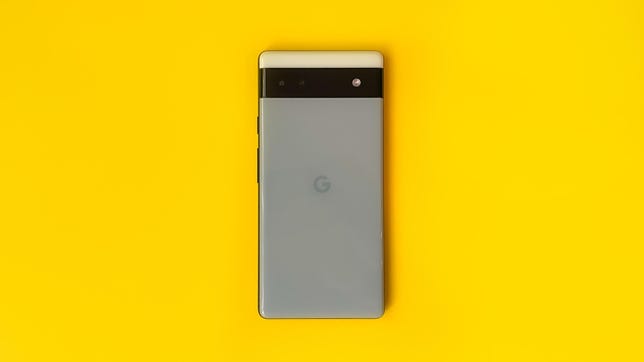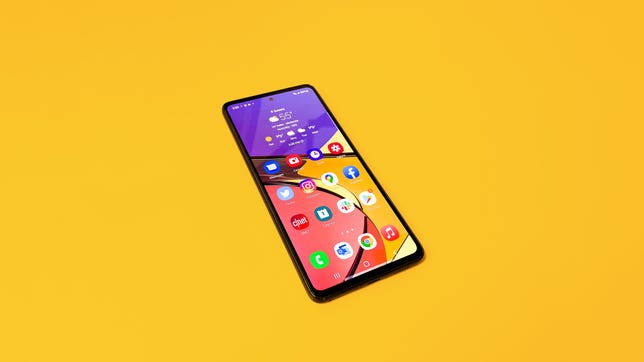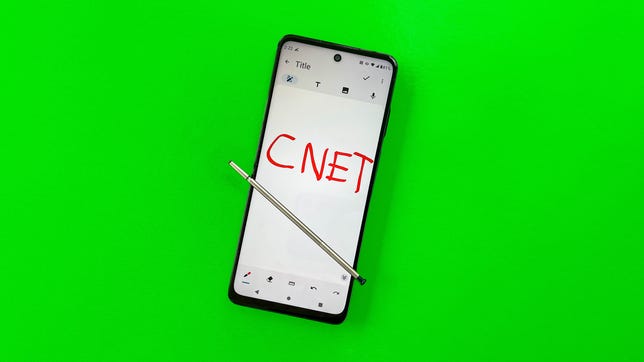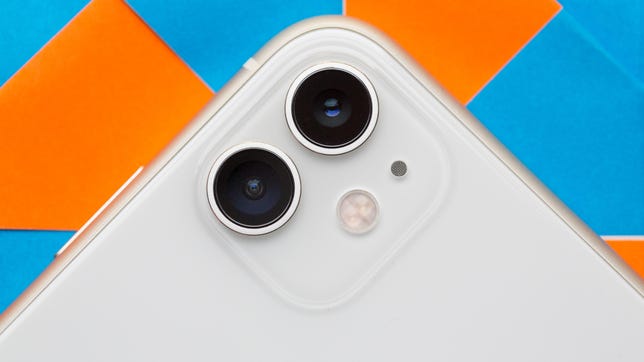
This story is part of Gift Guide, our year-round collection of the best gift ideas.
Phones that cost less than $500 are increasingly becoming the first place you should look when you need to buy a new device, especially as the holiday shopping season starts. These options, which often fall in the $400 to $500 range, have very few compromises compared to more pricier phones with more advanced features. They may also get a discount as Black Friday approaches, with some devices already seeing cuts of $100 to $150 off during recent shopping events.
Looking for a big 6.5-inch screen? Many of these phones have that, or a smaller display if that’s your preference. Need a great camera? You’ll find that in most of these picks. Most of these phones don’t skimp on software updates either, with their makers promising at minimum three years of security updates.
There are some compromises made to hit these lower phone prices, and you’ll find that each company takes a different strategy in order to make these cuts less noticeable. Apple’s iPhone SE and Google’s Pixel 6A, for instance, have a smaller screen and older camera setup, yet include new processors and software from these companies. Samsung’s Galaxy A53 has a spacious screen and impressive battery life, although it runs on a less powerful processor than the Galaxy S22. And the Moto G Stylus 5G takes nice photos, provides a roomy 256GB of space and throws in a stylus, but Motorola doesn’t provide software support for as long as its competitors.
Photography and video in particular are areas where these phones take a noticeable hit in comparison to their more expensive counterparts, but photo-processing software should help pick up some of the slack. For instance, while the iPhone SE has a single 12-megapixel camera that does not support night photography, its A15 Bionic chip does allow for Apple’s Deep Fusion processing. It’s a similar situation for the Pixel 6A, which uses a 12-megapixel main camera and a 12-megapixel ultrawide camera, yet can enhance those photos with processing powered by the phone’s Tensor chip.
You can see the pros and cons of each of these phones below, with more details available in our full reviews.
Lisa Eadicicco/CNET
The Pixel 6A replaces the Pixel 5A as the $449 budget-friendly version of its flagship phone. CNET’s Lisa Eadicicco called it the “best Android phone under $500” in her Pixel 6A review, calling out how it keeps the same Tensor chip seen in the $599 Pixel 6 and many of its features.
The phone is slightly smaller than the Pixel 6, featuring a 6.1-inch OLED display and a refresh rate of 60Hz. And it has a similar camera to the Pixel 5A, including a 12.2-megapixel main camera and a 12-megapixel ultrawide camera. But by including the Tensor chip, photos can benefit from its Real Tone skin tone feature, Face Unblur, Night Sight for darker photography and the Magic Eraser for removing unwanted elements from a photo.
Even though the phone is only a few months old, there are already occasions in which the Pixel 6A is discounted even further to $299, which is an incredible value.
You’re receiving price alerts for Google Pixel 6a (128GB, Charcoal)
Lisa Eadicicco/CNET
The $450 Samsung Galaxy A53 includes many of the best features seen in the Galaxy S22 line, with a few tradeoffs to hit that lower price. The phone includes a 6.5-inch AMOLED screen with a 2,400×1,080-pixel resolution, 5G support and a long-lasting 5,000-mAh battery. The phone also comes with a 64-megapixel main camera, 12-megapixel ultrawide camera, 5-megapixel macro camera and 5-megapixel depth camera.
But a particular high point for this phone is Samsung’s pledge to provide four years of software support, in addition to shipping with Android 12 with Samsung’s One UI 4.1.
Kevin Heinz/CNET
The $429 iPhone SE is a mix of an older design with the latest smartphone features, including Apple’s A15 Bionic chip and 5G support. It’s also one of the few phones on the market that includes a smaller, 4.7-inch screen.
It’s that throwback design, which continues the general shape that Apple has used since 2014, that could be what you love or dislike most about this phone. If you want a larger iPhone in this price range, you can also consider the iPhone 11, and get a bigger screen and Face ID. But that phone does not include 5G connectivity.
The phone also only includes one 12-megapixel main camera, which does not support night mode. Most other phones in this roundup include multiple cameras and features like night mode, making the omission noticeable. However, photos make up for this by including the Deep Fusion photo-processing technique to enhance medium-to-low light photos, and Smart HDR4 processing for improving color and contrast. CNET Managing Editor Patrick Holland did find that video shot in 4K resolution at 60 frames per second is particularly good on the iPhone SE, but it will not include the Cinematic Mode seen on the iPhone 13.
You’re receiving price alerts for Apple iPhone SE (64GB, Starlight)
Mike Sorrentino/CNET
The $500 Moto G Stylus 5G (2022) is one of the best stylus-equipped phones you can get right now, especially for the price. You get Android 12, 5G connectivity, a large 6.8-inch screen and a spacious 256GB of storage. Unfortunately, the phone is only promised one software update and three years of security updates, which is a much shorter timeline than the four years promised by Samsung for the Galaxy A53.
Yet if you want a stylus-equipped phone, the next step-up option is the substantially more expensive Galaxy S22 Ultra at $1,200.
Angela Lang/CNET
With the launch of the iPhone 14 series, Apple discontinued the $500 iPhone 11, but it’s still widely available. It might be a few generations old, but this phone is still more than capable, handling gaming well and equipped with two superb rear cameras. It is missing 5G support, which is increasingly improving as wireless carriers invest in the network, but the phone will work fine on LTE and Wi-Fi. The iPhone 11 also does not support MagSafe accessories, which were introduced alongside the iPhone 12.
Just note that some places may be selling refurbished versions of the phone since Apple itself is no longer selling new iPhone 11 models. Best Buy does not carry any unlocked models, so you’ll have to sign up for a service plan through either AT&T, Verizon, T-Mobile or Sprint.
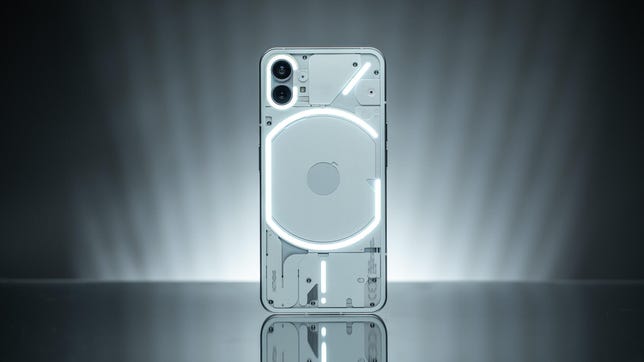
Andrew Lanxon/CNET
Nothing Phone 1
Flashy and affordable
The Nothing Phone 1 isn’t available in the US. But for countries where the phone is available, it offers a striking design and decent specs for the money. The £399 phone (which converts to roughly $480 or AU$700) is adorned with LED strips on the back, each of which is called a “glyph,” that light up for alerts and notifications. That design is accompanied by two 50-megapixel cameras: a wide angle and an ultrawide. Around the front is a 6.55-inch 120Hz display with a 2,400-by-1,080-pixel resolution and a 16-megapixel selfie camera. The phone runs on a Snapdragon 778G Plus chip, with models that start with 8GB of memory and 128GB of storage.
All that amounts to a phone that compares well within the price range, especially given its camera quality and looks. But for now, we’ll have to see if future Nothing phone models end up getting a release in the US.
Frequently asked questions about phones under $500
Can you get a good camera on a cheaper phone?
Yes, you can find several cheaper phones that take great photos, whether it’s through the camera available on the device, photo processing software on the phone or — is most often the case — a combination of both.
Apple’s iPhone SE includes the A15 Bionic chip, which supports Smart HDR4 processing and Apple’s Deep Fusion processing. Smart HDR4 helps with improving color and contrast, while the Deep Fusion processing helps with medium- to low-light environments. CNET Managing Editor Patrick Holland put together a sampling of photos and videos taken on the phone during his review, which can be watched on the CNET Highlights YouTube channel. However, the iPhone SE also has only one 12-megapixel camera, and that camera does not support night photography.
Over on the Android side, the Google Pixel 6A includes the company’s Tensor chip, which brings photography features like Real Tone for capturing more accurate skin tones, Face Unblur for fixing a person’s face and Magic Eraser for removing unwanted objects. But it has a 12-megapixel main camera paired up with a 12-megapixel ultrawide camera, which takes good photos but is a clear step down from the 50-megapixel main camera seen on the Pixel 6 and Pixel 7.
Samsung’s Galaxy A53 is an interesting case: Iit has a main 64-megapixel camera alongside a 12-megapixel ultrawide, 5-megapixel macro camera and 5-megapixel depth camera. While that’s more megapixels than the 50-megapixel main camera on the Galaxy S22, the image detail is a step down with the S22 able to produce photos with better contrast and sharpness.
What makes these phones cheaper?
Each company takes a different approach toward cheaper phones.
The iPhone SE, for example, has a recent Apple processor packed inside an otherwise dated phone design. Google’s Pixel 6A likewise includes the new Tensor processor, but uses an older 12.2-megapixel main camera instead of the 50-megapixel main camera found on the $599 Pixel 6.
Samsung’s Galaxy A53 takes the opposite approach. It includes a processor that’s slower than the Galaxy S22’s but includes other modern features like a screen with a high refresh rate.
Are cheaper phones worth it?
For many people, a phone that costs under $500 will likely meet everything you need for communication, photography and entertainment. In some cases, the phones even provide some of the latest features seen on higher-end phones like smooth 120Hz refresh rates and multiple cameras.
However, you should be aware of — and OK with — the tradeoffs that the phone may have compared to their more expensive counterparts. For instance, if you really want an iPhone with a bigger screen than what’s offered on the iPhone SE and iPhone 11, your next best option is the $899 iPhone 14 Plus. That’s quite a bit more expensive than the $500 price range, but you also get additional benefits like an improved camera.
On the other hand, if you want a phone with a bigger screen and if running Android is fine, then you’ll have plenty of options that are under $500.
How we test
CNET tests phones by using them daily and comparing them against other competing phones to assess whether they’re a good value. We evaluate a variety of factors, such as the phone’s screen, cameras, battery life, software, performance, features and ease-of-use.
For low-priced phones, we make sure these devices consistently work well across many different use cases. This includes many day-to-day activities like reading the news, listening to music, watching videos, texting, playing games and multitasking.
Phone cameras are tested in a range of environments like outdoors in the daytime and nighttime, indoors in darker settings, in active environments like a concert or a sports game and with a variety of subjects like people, objects and pets. We also test available camera settings, especially those that are rarer in these price ranges such as Night mode and Portrait mode.
These anecdotal phone experiences are also combined with benchmark tests such as Geekbench performance testing and battery testing. Battery life is monitored in two ways: Both by seeing how much power is typically left after a day of normal usage and by seeing how much battery is depleted during a more intensive hour with the phone. For that latter test, we’ll check how the phone’s battery holds up to a series of video calls, gaming, video streaming and web browsing.
Samsung Galaxy A53 5G vs. Motorola Moto G Stylus 5G vs. Google Pixel 6A vs. Apple iPhone SE (2022) vs. Nothing Phone 1 vs. Apple iPhone 11
| Samsung Galaxy A53 5G | Motorola Moto G Stylus 5G (2022) | Google Pixel 6A | Apple iPhone SE (2022) | Nothing Phone 1 | iPhone 11 | |
|---|---|---|---|---|---|---|
| Display size, resolution | 6.5-inch AMOLED (2,400×1,080 pixels); 120 Hz | 6.8-inch LTPS LCD FHD+; 2,460 x1,080 pixels; 120 Hz | 6.1-inch OLED; (1080 x 2400); 60Hz | 4.7-inch LCD; (1,334×750 pixels); 60 Hz | 6.55-inch OLED display, 2,400 x1080 pixels; | 6.1-inch LCD Liquid Retina; 1,792×828 pixels |
| Pixel density | 405ppi | TBD | 429 ppi | 326ppi | 402ppi | 326ppi |
| Dimensions (inches) | 6.28 x 2.94 x 0.32 in | 6.65 x 2.98 x 0.37 in | 6.0 x 2.8 x 0.35 in | 5.45 x 2.65 x 0.29 in | 5.94×2.98×0.33 in | |
| Dimensions (millimeters) | 159.6 x 74.8 x 8.1 mm | 168.9 x 75.8 x 9.3 mm | 152.2 x 7.18 x 8.9 mm | 138.4 x 67.3 x 7.3 mm | 159.2 x 75.8 x 8.3 mm | 150.9×75.7×8.3 mm |
| Weight (ounces, grams) | 6.67 oz; 189g | 7.58 oz; 215 g | 6.3 oz; 178g | 5.09 oz; 144g | 193.5g | 6.84 oz; 194g |
| Mobile software | Android 12 | Android 12 | Android 12 | iOS 15 | Android 13 | iOS 13 |
| Camera | 64-megapixel (wide), 12-megapixel (ultra-wide), 5-megapixel (macro), 5-megapixel (depth) | 50-megapixel (wide), 8-megapixel (ultrawide/macro), 2-megapixel (depth) | 12.2-megapixel (wide), 12-megapixel ultra wide) | 12-megapixel (wide) | 50-megapixel (main), 50-megapixel (ultra-wide) | 12-megapixel (wide), 12-megapixel (ultra-wide) |
| Front-facing camera | 32-megapixel | 16-megapixel | 8-megapixel | 7-megapixel | 16-megapixel | 12-megapixel with Face ID |
| Video capture | 4K | 1,080p | 4K | 4K | 4K at 60fps | 4K |
| Processor | Exynos 1280 | Snapdragon 695 5G | Google Tensor | Apple A15 Bionic | Snapdragon 778G+ | Apple A13 Bionic |
| RAM/Storage | 6GB/128GB | 8GB/256GB | 6GB RAM/128GB storage | 64GB, 128GB, 256GB | 8GB + 128GB, 8GB +256 GB, 12GB RAM + 256GB | 64GB, 128GB, 256GB |
| Expandable storage | Up to 1TB | Up to 1TB | None | NA | None | None |
| Battery/Charger | 5,000mAh (charger not included, does not support wireless charging) | 5,000mAh (10W wired charger included) | 4,410 mAh capacity; 18-watt fast charging (adapter sold separately) | Batttery NA (20W wired charging — charger not included), 7.5W wireless charging) | 4,500mAH (33W wired charging, 15W wireless charging, 5W reverse charging) | Not disclosed, but Apple claims it will last 1 hour longer than iPhone XR |
| Fingerprint sensor | In-display | Side | Under display | Home button | In-display | None (Face ID) |
| Connector | USB-C | USB-C | USB C | Lightning | USB-C | Lightning |
| Headphone jack | None | Yes | None | None | None | No |
| Special features | 5G-enabled; IP67 rating; supports 25W wired fast charging, Samsung Pay | 5G-enabled; OIS for main camera; NFC for Google Pay; | 5G-enabled, 18W fast charging, WiFi 6E, security updates for 5 years, Android OS updates for 3 years, dual SIM, IP67 water resistance | 5G-enabled; supports 25W wired fast charging; Water resistant (IP67); dual-SIM capabilities (nano-SIM and e-SIM); wireless charging | 5G, IP53, Three years of Android updates, Dual Sim, 120Hz adaptive refresh rate | Water resistant (IP68); dual-SIM capabilities (nano-SIM and e-SIM); wireless charging |
| Price off-contract (USD) | $450 | $500 | $449 | $399 (64GB), $449 (128GB), $549 (256GB) | N/A | $499 |
| Price (GBP) | £399 | NA but converts to £405 | £399 | £419 (64GB), £469 (128GB), £569 (256GB) | £399 | £489 |
| Price (AUD) | AU$699 | NA but converts to AU$715 | A$749 | AU$749 (64GB), AU$829 (128GB), AU$999 (256GB) | N/A | AU$849 |
More phone advice
Find The Perfect Gift
AllUnder $10Under $20Under $50Under $100Under $250
allmomsdadsgrandparentsfitnesstravelersteenspreteenstechgamingfoodiesromanticjewelryhomekids
107 results

